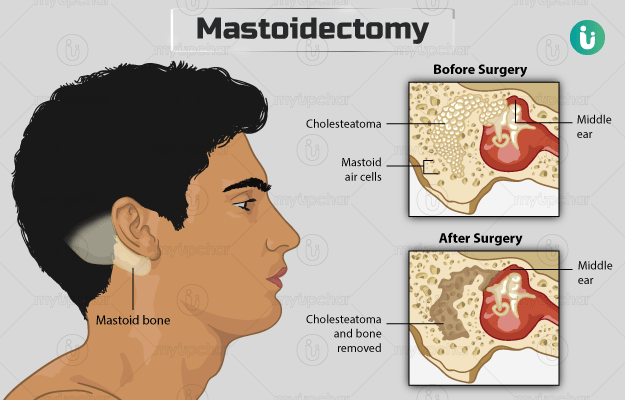MASTOIDECTOMY
Definition: Mastoidectomy is a surgery performed to eradicate the disease present in the middle ear cleft, the mastoid air cells and the attic. The extent and type of disease indicates the type of mastoidectomy required.
Indications:
-
1. Simple (Cortical) Mastoidectomy:
- Removal of the disease from the mastoid antrum or the air cell system with intact bony external canal wall without disturbing the middle ear contents.
- Indications:
- Coalescent mastoiditis
- Unresolving Acute otitis media
- As an approach to:
- Facial nerve decompression
- Endolymphatic sac decompression
- Labyrinthectomy
-
2. Radical Mastoidectomy:
- The mastoid antrum and air cell system, aditus ad antrum, attic and middle ear are converted into a common cavity.
- The eustachian tube opening is plugged by cartilage.
- The middle ear remnants of tympanic membrane, malleus and incus are removed, except the stapes foot plate if healthy.
- Indications:
- Extensive cholesteatoma with evidence of complications.
- Recurrent cholesteatoma.
- Malignancy of mastoid bone or middle ear.
- Glomus tumours.
- Tuberculous mastoiditis.
3. Bondy's Modified Radical Mastoidectomy:
- This surgery is similar to radial mastoidectomy but the ossicular chain, the mucosa over promontory, if healthy, is kept intact thus preserving as much of the hearing as possible.
- Indications:
- Cholesteatoma confined to Attic and Antrum.


